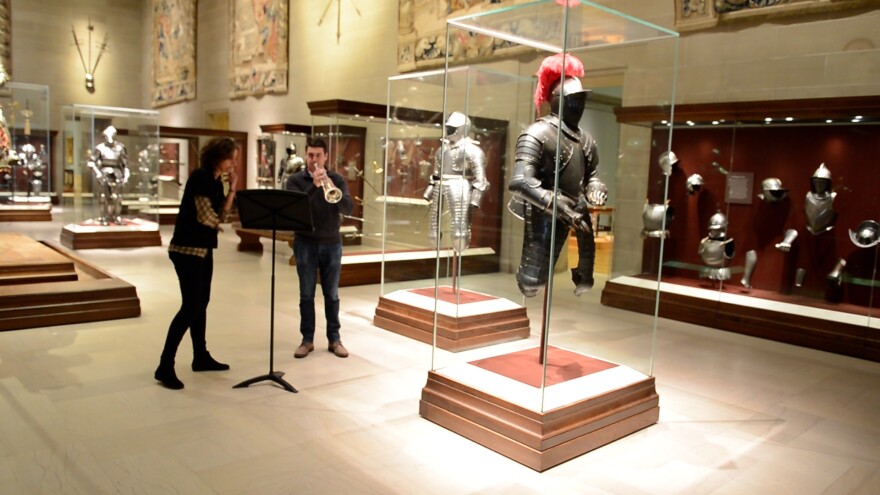A 15th century Byzantine icon of the Virgin Mary and the infant Christ at the Cleveland Museum of Art served as an artistic and spiritual muse for Aleksandra Vrebalov.
The Serbian-American composer stages her original work inspired by the art, “Antennae,” April 12 at 7:30 p.m. in the museum.
Vrebalov’s composition was commissioned by the museum and the Cleveland Foundation in 2018. Originally scheduled for March 2020, the concert was postponed due to the pandemic.

Speaking with Vrebalov in 2019, she explained how the concert is influenced by Byzantine chants.
“One element of the Byzantine chant is a long-held drone. So, I decided to have local vocalists, people from Cleveland who would join us and throughout the galleries, hold that basic tone,” she said.
The vocalists will begin in the museum’s Byzantine galleries on the first floor of the museum’s 1916 building. Joining them will be the Portland-based vocal ensemble Cappella Romana singing the Byzantine chant in front of the icon.
“It's really about forming a community and having people come together and uniting around the frequency,” she said.
Vrebalov said it’s a powerful way to connect the spiritual world of the icon with the physical world of the museum.

“[The icon] is actually not an art object in the tradition where it comes from,” she said. “We see it as an art object because it's in the museum. But it's actually an entity that's seen in the tradition where it's coming from, as an object of power, it's associated with miracles. It's considered to be able to heal, to grant wishes and prayers.”
Performing at the same time, in other parts of the museum, will be a string quartet from the Cleveland Institute of Music, a trumpet quartet, two organ players and two chimes performers.

“All these different patterns that we'll be hearing from different points in space and time will be brought all together in the atrium in the second part of the program that's more stationary,” she said.
As audience members move through the galleries and the atrium of the museum, Vrebalov said there will always be something else to pay attention to.
“I'm hoping that there will be a sense of togetherness and care and listening for each of us to connect with something larger and more important than just our immediate physical existence,” she said.





